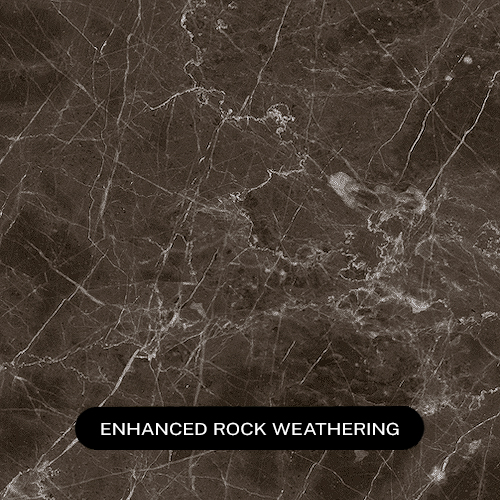Enhanced Rock Weathering is a relatively new approach to mitigating climate change
Introducing Forward Financing of Climate Carbon Projects
Enhanced Rock Weathering (ERW) is a method of harnessing our planet's own mechanisms to pull vast amounts of CO2 from the atmosphere, converting it into bicarbonates and carbonates that are ultimately washed away into the oceans, where they are stored for geological timescales.
In more detail, by dispersing finely ground silicate rocks, such as basalt and olivine, across large areas of soil, ERW accelerates the chemical reactions between these minerals and atmospheric CO2. This accelerated weathering process effectively captures and stores CO2 in stable, mineral forms – a method with significant carbon sequestration potential. Olivine – a magnesium iron silicate – is specifically known for its high reactivity with CO2. This mineral can weather quickly and is particularly effective at CO2 capture, making it an attractive option for rapid deployment.

Beyond its climate mitigation potential, ERW offers substantial benefits for agriculture. The minerals used in the weathering process release essential nutrients like potassium, magnesium, and calcium, which can enhance soil fertility and improve crop yields. This nutrient infusion not only reduces the dependency on chemical fertilizers but also helps in maintaining soil pH balance, making lands more productive and sustainable.


